Sparse Decomposition of Heart Rate Using a Bernoulli-Gaussian Model: Application to Sleep Apnoea Detection
Abstract
:1. Introduction
2. Materials and Methods
2.1. Sparse Decomposition
2.2. Probabilistic Modelling of the Observed Signal and Connection to Optimisation
2.3. RDI Estimator
2.4. Objective and Data Inventory
2.4.1. Objective
2.4.2. Internal Data
- Heart rate (HR) at a 1 Hz resampling frequency. This signal was established from electrocardiography data, from which R-peaks were extracted, RR intervals were measured, quality was reviewed, and instantaneous HR was computed, interpolated, and resampled at 1 Hz.
- Accelerometry data, also at 1 Hz and synchronous with the heart rate. These originate from the wrist and help distinguish movement-induced cardiac events.
- Expert-based sleep scoring and the resulting hypnogram, which represents the temporal distribution of sleep stages through the recording in 30-s epochs, were established based on the polysomnography data. Polysomnography was recorded simultaneously with the Somno-Art device, allowing for future evaluation of the latter as a potential tool for apnoea screening.
- Expert-based assessment was used to identify apnoeas in the signal, which served as our ground truth.
- Assessment of limb movements.
2.4.3. The PhysioNet Apnea ECG Database
- Class A contains at least 1 h with an apnoea index of 10 or more, and at least 100 min with apnoea during the recording.
- Class B contains at least 1 h with an apnoea index of 5 or more, and between 5 and 99 min with apnoea during the recording.
- Class C contains fewer than 5 min of apnoea during the recording (which is clearly not equivalent to the AHI).
3. Results
3.1. Evaluation of Internal Data
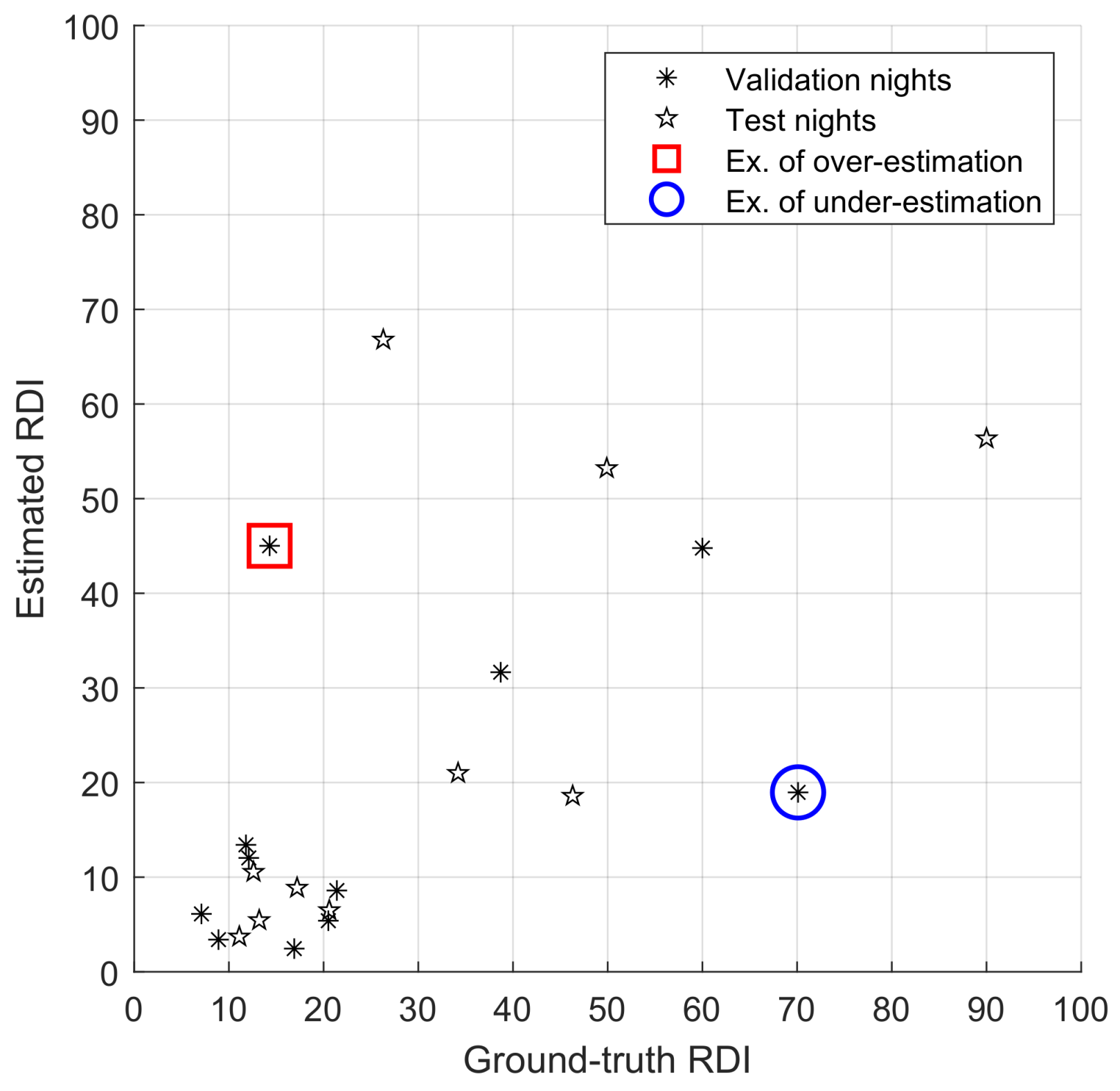
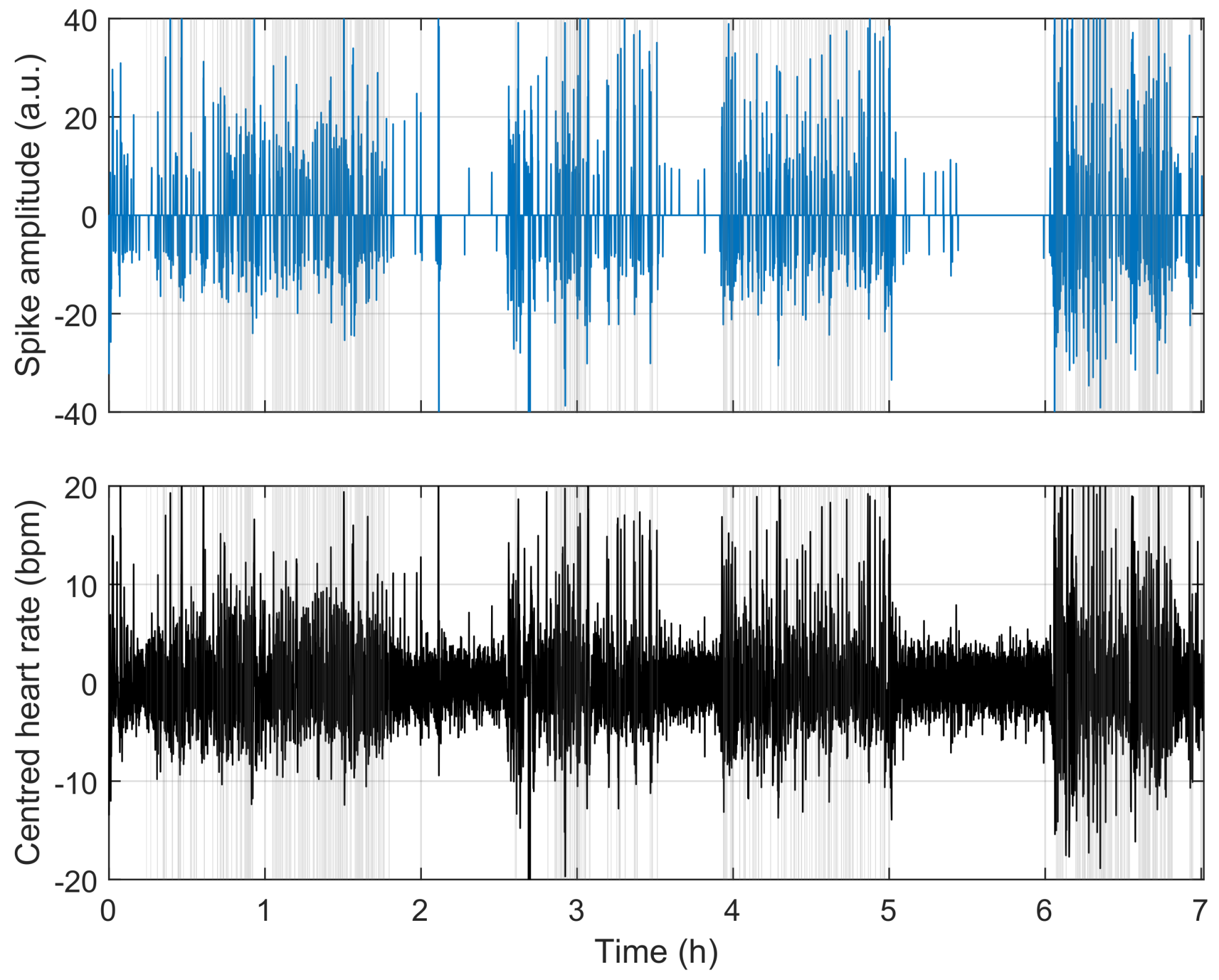
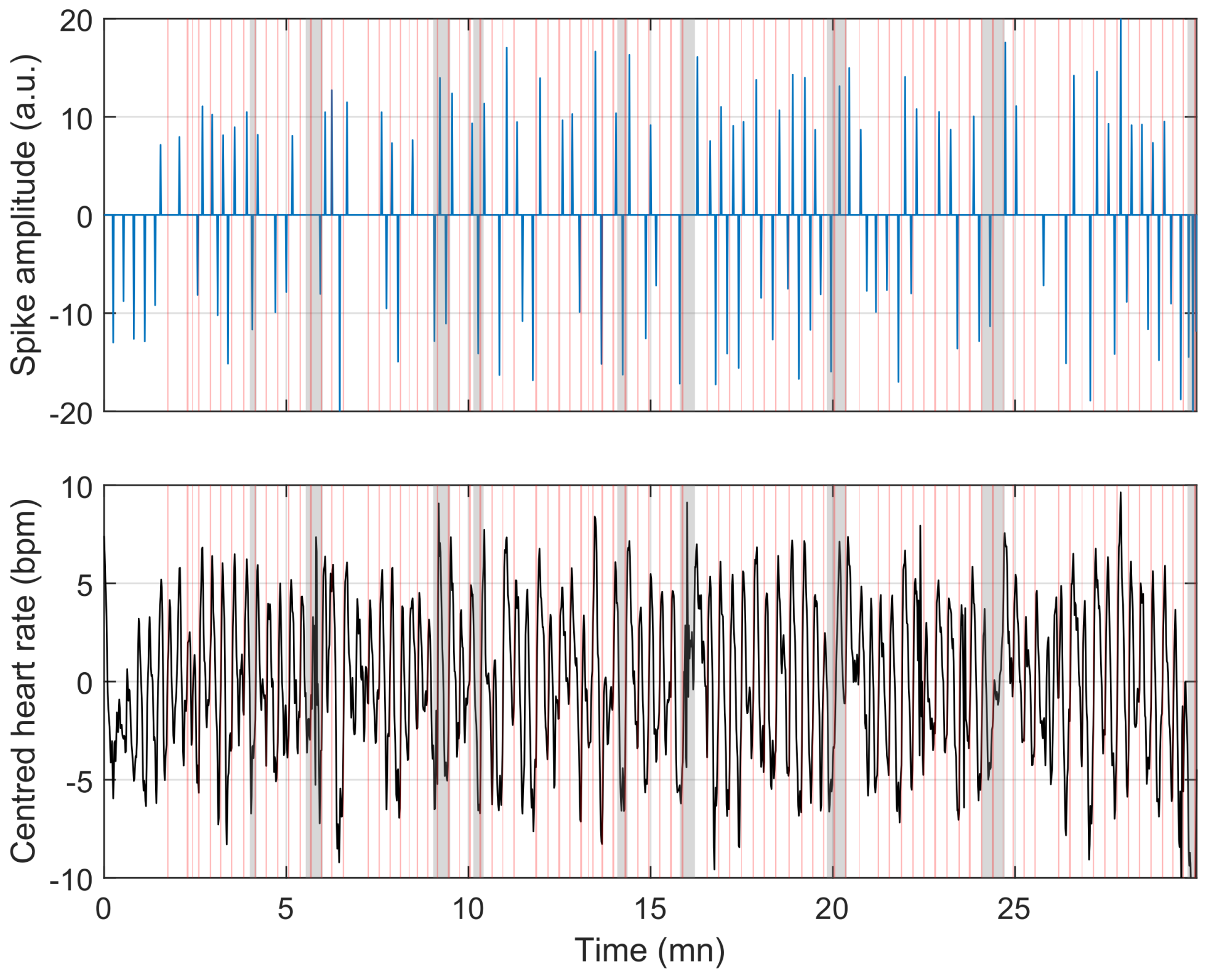
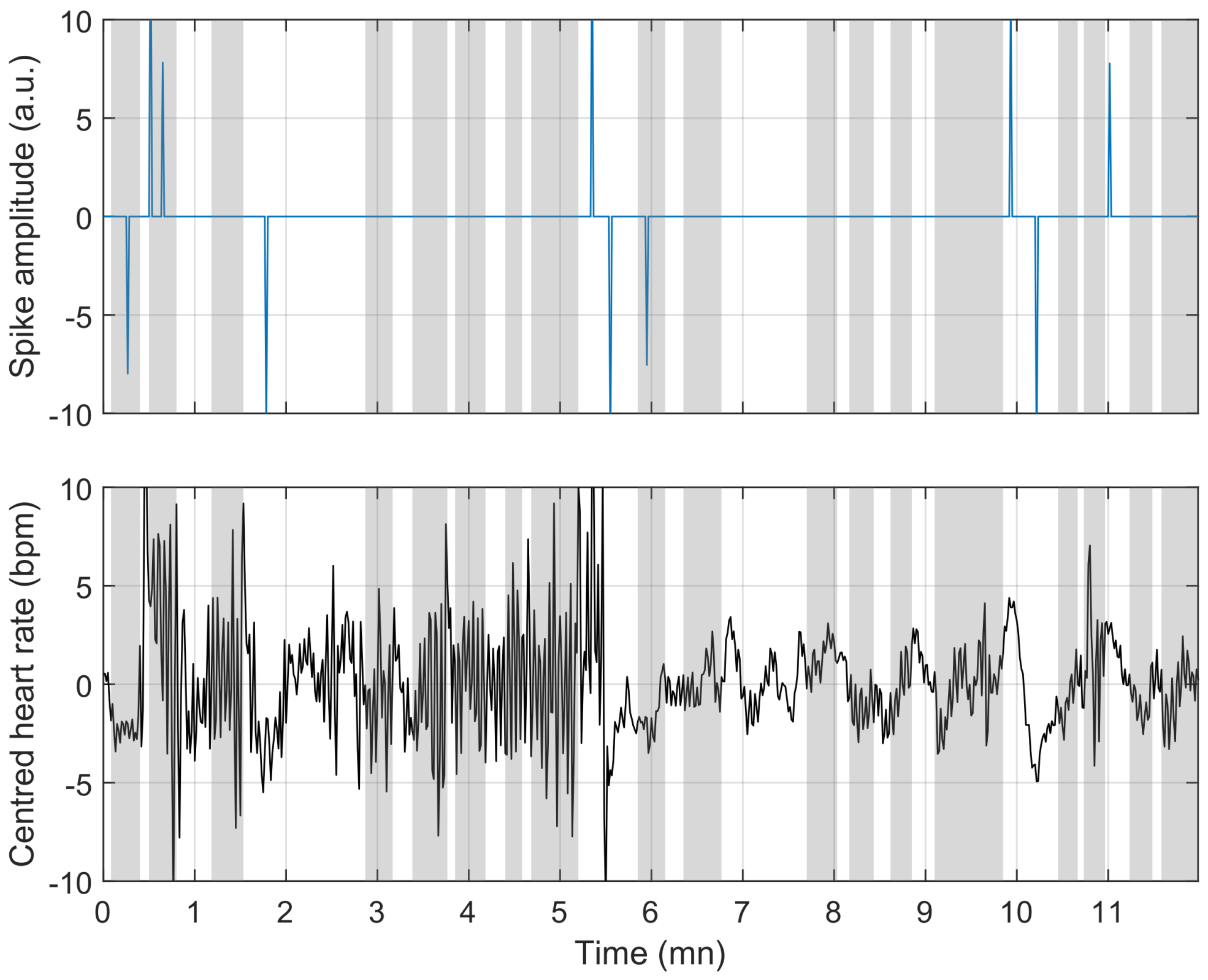
3.2. Evaluation of the PhysioNet Apnea ECG Database
4. Discussion
5. Conclusions
Author Contributions
Funding
Institutional Review Board Statement
Informed Consent Statement
Data Availability Statement
Acknowledgments
Conflicts of Interest
References
- Ramachadran, A.; Karappiah, A. A Survey on Recent Advances in Machine Learning Based Sleep Apnea Detection Systems. Healthcare 2021, 9, 914. [Google Scholar] [CrossRef]
- Sullivan, C.E.; Issa, F.G.; Berthon-Jones, M.; Eves, L. Reversal of obstructive sleep anea by continuous positive airway pressure applied through the nares. Lancet 1981, 1, 862–865. [Google Scholar] [CrossRef] [PubMed]
- Penzel, T.; Kantelhardt, J.W.; Lo, C.C.; Voigt, K.; Vogelmeier, C. Dynamics of Heart Rate and Sleep Stages in Normals and Patients with Sleep Apnea. Neuropsychopharmacology 2003, 28 (Suppl. 1), S48–S53. [Google Scholar] [CrossRef]
- Varon, C.; Morales, J.; Lázaro, J.; Orini, M.; Deviaene, M.; Kontaxis, S.; Testelmans, D.; Buyse, B.; Borzée, P.; Sörnmo, L.; et al. A Comparative Study of ECG-derived Respiration in Ambulatory Monitoring using the Single-lead ECG. Sci. Rep. 2020, 10, 5704. [Google Scholar] [CrossRef] [PubMed] [Green Version]
- Meredith, D.J.; Clifton, D.; Charlton, P.; Brooks, J.; Pugh, C.W.; Tarassenko, L. Photoplethysmographic derivation of respiratory rate: A review of relevant physiology. Med. Eng. Technol. 2012, 36, 1–7. [Google Scholar] [CrossRef] [Green Version]
- Muzet, A.; Werner, S.; Fuchs, G.; Roth, T.; Saoud, J.B.; Viola, A.U.; Schaffhauser, J.Y.; Luthringer, R. Assessing sleep architecture and continuity measures through the analysis of heart rate and wrist movement recordings in healthy subjects: Comparison with results based on polysomnography. Sleep Med. 2016, 21, 47–56. [Google Scholar] [CrossRef] [Green Version]
- Thiesse, L.; Staner, L.; Fuchs, G.; Kirscher, D.; Dehouck, V.; Roth, T.; Schaffhauser, J.Y.; Saoud, J.B.; Viola, A.U. Performance of Somno-Art Software compared to polysomnography interscorer variability: A multi-center study. Sleep Med. 2022, 96, 14–19. [Google Scholar] [CrossRef]
- Padovano, D.; Martínez-Rodrigo, A.; Pastor, J.M.; Rieta, J.J.; Alcaraz, R. Obstructive Sleep Apnea Detection Methods Based on Heart Rate Variability Analysis: Opportunities for a Future Cinc Challenge. In Proceedings of the Computing in Cardiology, Rimini, Italy, 13–16 September 2020; pp. 1–4. [Google Scholar]
- Mendonca, F.; Mostafa, S.S.; Ravelo-Garcia, A.G.; Morgado, F.; Penzel, T. A Review of Obstructive Sleep Apnea Detection Approaches. IEEE J. Biomed. Health Inform. 2019, 23, 825–837. [Google Scholar] [CrossRef] [PubMed]
- Mostafa, S.S.; Mendonca, F.G.; Ravelo-Gardia, A.; Morgado-Dias, F. A Systematic Review of Detecting Sleep Apnea Using Deep Learning. Sensors 2019, 19, 4934. [Google Scholar] [CrossRef] [Green Version]
- Cheng, H.; Liu, Z.; Yang, L.; Chen, X. Sparse representation and learning in visual recognition: Theory and applications. Signal Process. 2003, 93, 1408–1425. [Google Scholar] [CrossRef]
- Elad, M.; Figueiredo, M.; Ma, Y. On the role of sparse and redundant representations in image processing. IEEE Signal Process. Mag. 2010, 98, 972–982. [Google Scholar] [CrossRef]
- Mallat, S. A Wavelet Tour of Signal Processing: The Sparse Way; Academic Press: Cambridge, MA, USA, 2008. [Google Scholar]
- Starck, J.; Murtagh, F.; Fadili, J.M. Sparse Image and Signal Processing: Wavelets, Curvelets, Morphological Diversity; Cambridge University Press: Cambridge, UK, 2010. [Google Scholar]
- Elad, M. Sparse and Redundant Representations: From Theory to Applications in Signal and Image Processing; Springer: New York, NY, USA, 2010. [Google Scholar]
- Bruckstein, A.M.; Donoho, D.L.; Elad, M. From sparse solutions of systems of equations to sparse modeling of signals and images. SIAM Rev. 2009, 51, 34–81. [Google Scholar] [CrossRef] [Green Version]
- Xu, Y.; Zhang, D.; Yang, J.; Yang, J. A two-phase test sample sparse representation method for use with face recognition. IEEE Trans. Circuits Syst. Video Technol. 2011, 21, 1255–1262. [Google Scholar]
- Wright, J.; Ma, Y.; Mairal, J.; Sapiro, G.; Huang, T.; Yan, S. Sparse representation for computer vision and pattern recognition. Proc. IEEE 2010, 98, 1031–1044. [Google Scholar] [CrossRef] [Green Version]
- Donoho, D.L. Compressed sensing. IEEE Trans. Inf. Theory 2006, 52, 1289–1306. [Google Scholar] [CrossRef]
- Baraniuk, R.G. Compressive sensing. IEEE Signal Process. Mag. 2007, 24, 118–121. [Google Scholar] [CrossRef]
- Candes, E.J.; Romberg, J.; Tao, T. Robust uncertainty principles: Exact signal reconstruction from highly incomplete frequency information. IEEE Trans. Inf. Theory 2006, 52, 489–509. [Google Scholar] [CrossRef] [Green Version]
- Candes, E.J.; Wakin, M.B. An introduction to compressive sampling. IEEE Signal Process. Mag. 2008, 25, 21–30. [Google Scholar] [CrossRef]
- Tsaig, Y.; Donoho, D.L. Extensions of compressed sensing. Signal Process. 2006, 86, 549–571. [Google Scholar] [CrossRef]
- Candes, E.J. Compressive sampling. Proc. Int. Congr. Math. 2006, 52, 1433–1452. [Google Scholar]
- Zhang, Z.; Xu, Y.; Yang, J.; Li, X.; Zhang, D. A Survey of Sparse Representation: Algorithms and Applications. IEEE Access 2015, 3, 490–530. [Google Scholar] [CrossRef]
- Tibshirani, R. Regression shrinkage and selection via the lasso. J. R. Stat. Soc. Ser. 1996, 58, 267–288. [Google Scholar] [CrossRef]
- Natarajan, B. Sparse approximate solutions to linear systems. SIAM J. Comput. 1995, 24, 227–234. [Google Scholar] [CrossRef] [Green Version]
- Davis, G.; Mallat, S.; Avellaneda, M. Adaptive greedy approximations. Constr. Approx. 1997, 13, 57–98. [Google Scholar] [CrossRef]
- Mohimani, G.H.; Babaie-Zadeh, M.; Jutten, C. Fast Sparse Representation Based on Smoothed L0 Norm. In Independent Component Analysis and Signal Separation. ICA 2007. Lecture Notes in Computer Science; Davies, M.E., James, C.J., Abdallah, S.A., Plumbley, M.D., Eds.; Springer: Berlin/Heidelberg, Germany, 2007; Volume 4666. [Google Scholar]
- Zayyani, H.; Babaie-Zadeh, M. Thresholded smoothed-L0 (SL0) dictionary learning for sparse representations. In Proceedings of the 2009 IEEE International Conference on Acoustics, Speech and Signal Processing, Taipei, Taiwan, 19–24 April 2009; pp. 1825–1828. [Google Scholar] [CrossRef]
- Wang, L.; Wang, J.; Xiang, J.; Yue, H. A re-weighted smoothed norm regularized sparse reconstructed algorithm for linear inverse problems. J. Phys. Commun. 2019, 3, 075004. [Google Scholar] [CrossRef]
- Xiang, J.; Yue, H.; Yin, X.; Wang, L. A New Smoothed L0 Regularization Approach for Sparse Signal Recovery. Math. Probl. Eng. 2019, 2019, 57–98. [Google Scholar] [CrossRef] [Green Version]
- Mallat, S.G.; Zhang, Z. Matching pursuits with time-frequency dictionaries. IEEE Trans. Signal Process. 1993, 41, 3397–3415. [Google Scholar] [CrossRef] [Green Version]
- Goussard, Y.; Demoment, G.; Idier, J. A new algorithm for iterative deconvolution of sparse spike trains. In Proceedings of the IEEE ICASSP, Albuquerque, NM, USA, 3–6 April 1990; pp. 1547–1550. [Google Scholar]
- Champagnat, F.; Goussard, Y.; Idier, J. Unsupervised deconvolution of sparse spike trains using stochastic approximation. IEEE Trans. Signal Process. 1996, 44, 2988–2998. [Google Scholar] [CrossRef] [Green Version]
- Mahalanabis, A.K.; Prasad, S.; Mohandas, K.P. Recursive decision directed estimation of reflection coefficients for seismic data deconvolution. Automatica 1982, 18, 721–726. [Google Scholar] [CrossRef]
- Giannakis, G.B.; Mendel, J.M.; Zhao, X. A fast prediction-error detector for estimating sparse-spike sequences. IEEE Trans. Geosci. Remote Sens. 1989, 27, 344–351. [Google Scholar] [CrossRef]
- Goussard, Y.; Demoment, G. Recursive deconvolution of Bernoulli-Gaussian processes using a MA representation. IEEE Trans. Geosci. Remote Sens. 1989, 27, 384–394. [Google Scholar] [CrossRef]
- Idier, J.; Goussard, Y. Stack algorithm for recursive deconvolution of Bernoulli-Gaussian processes. IEEE Trans. Geosci. Remote Sens. 1990, 28, 975–978. [Google Scholar] [CrossRef] [Green Version]
- Kormylo, J.; Mendel, J.M. Maximum-likelihood detection and estimation of Bernoulli-Gaussian processes. IEEE Trans. Inform. Theory 1982, IT-28, 482–488. [Google Scholar] [CrossRef]
- Chi, C.Y.; Mendel, J.M. Improved maximum-likelihood detection and estimation of Bernoulli-Gaussian processes. IEEE Trans. Inform. Theory 1984, IT-30, 429–435. [Google Scholar]
- Lavielle, M. Bayesian deconvolution of Bernoulli-Gaussian processes. Signal Process. 1993, 33, 67–79. [Google Scholar] [CrossRef]
- Soussen, C.; Idier, J.; Brie, D.; Duan, J. From Bernoulli–Gaussian Deconvolution to Sparse Signal Restoration. IEEE Trans. Signal Process. 2011, 59, 4572–4584. [Google Scholar] [CrossRef] [Green Version]
- Soussen, C.; Idier, J.; Brie, D.; Duan, J. From Bernoulli–Gaussian Deconvolution to Sparse Signal Restoration. Technical Report. Available online: https://hal.archives-ouvertes.fr/file/index/docid/443842/filename/part1.pdf (accessed on 1 December 2022).
- Adult Obstructive Sleep Apnea Task Force of the American Academy of Sleep Medicine. Clinical guideline for the evaluation, management and long-term care of obstructive sleep apnea in adults. J. Clin. Sleep Med. 2009, 3, 263–276. [Google Scholar]
- Goldberger, A.L.; Amaral, L.; Glass, L.; Hausdorff, J.; Ivanov, P.C.; Mark, R.; Stanley, H.E. PhysioBank, PhysioToolkit, and PhysioNet: Components of a new research resource for complex physiologic signals. Circulation 2000, 23, e215–e220. [Google Scholar] [CrossRef] [Green Version]
- Penzel, T.; Moody, G.B.; Mark, R.G.; Goldberger, A.L.; Peter, J.H. The Apnea-ECG Database. Comput. Cardiol. 2000, 27, 255–258. [Google Scholar] [CrossRef]
- McNames, J.; Fraser, A.; Rechtsteiner, A. Sleep Apnea Classiłcation Based on Frequency of Heart Rate Variability. 2000. Available online: http://web.cecs.pdx.edu/mcnames/Publications/Cinc2000Abstract.pdf (accessed on 10 November 2022).
- Moody, G.B.; Mark, R.G.; Goldberger, A.; Penzel, T. Stimulating rapid research advances via focused competition: The Computers in Cardiology Challenge 2000. Comput. Cardiol. 2000, 27, 207–210. [Google Scholar]
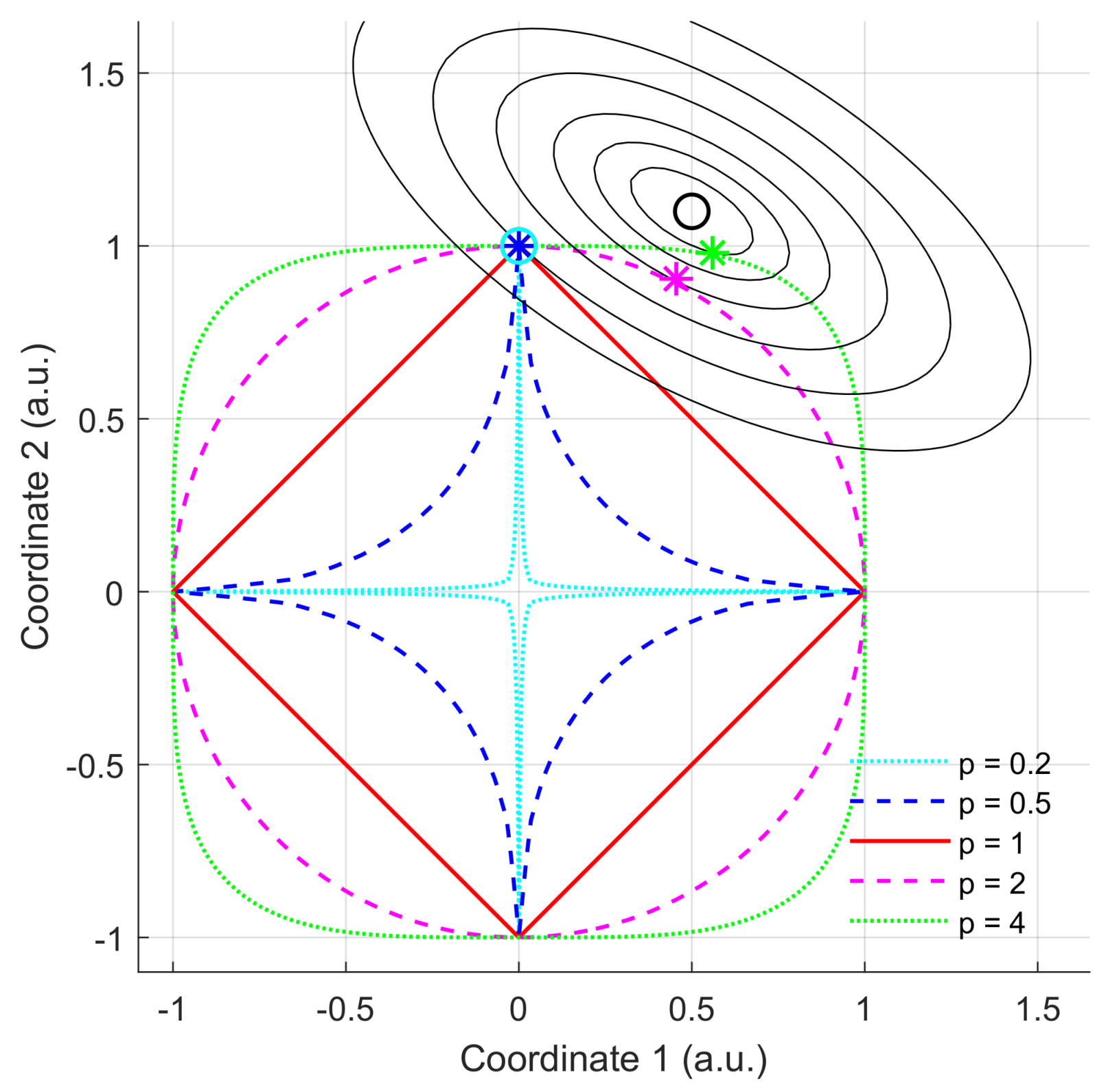
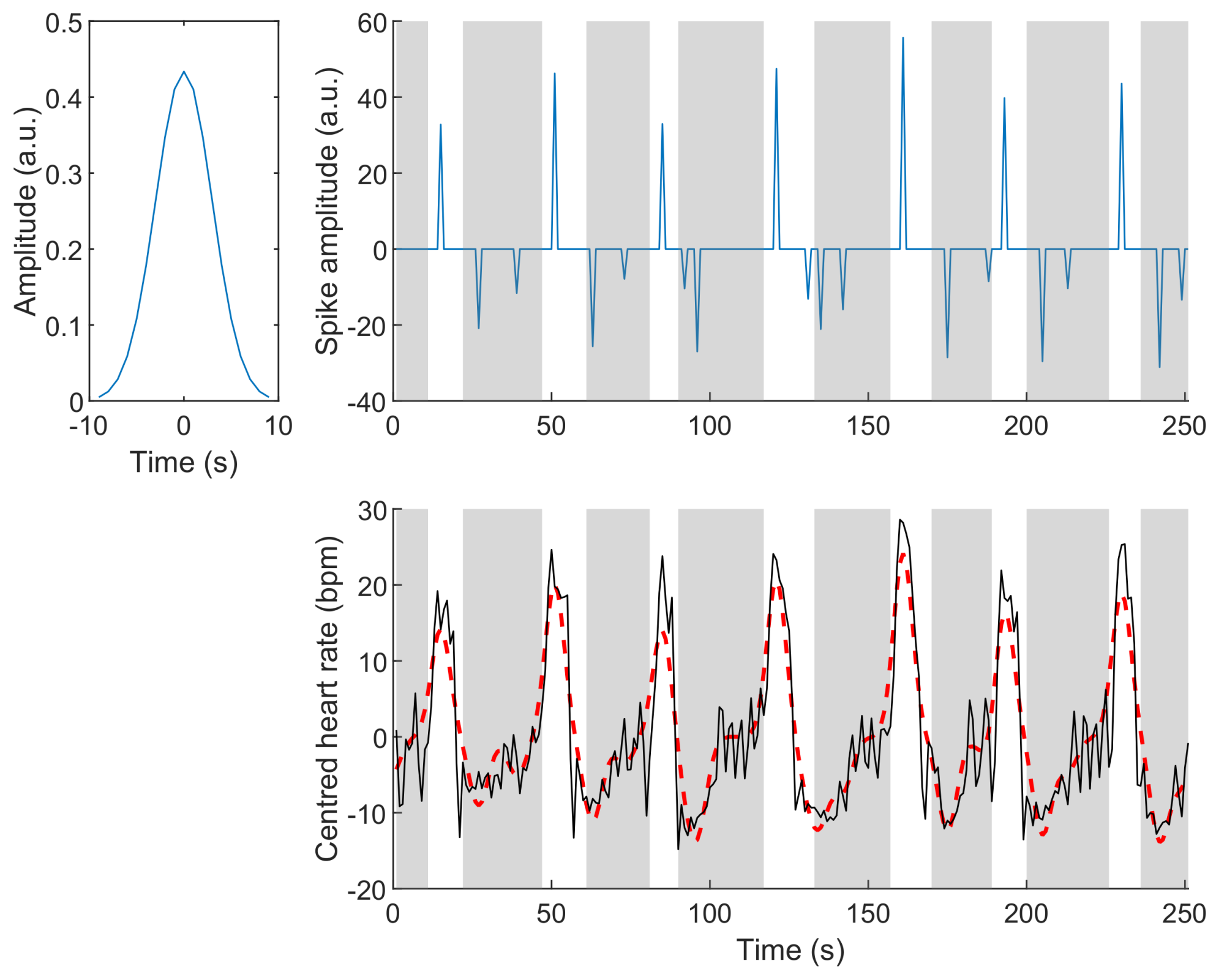
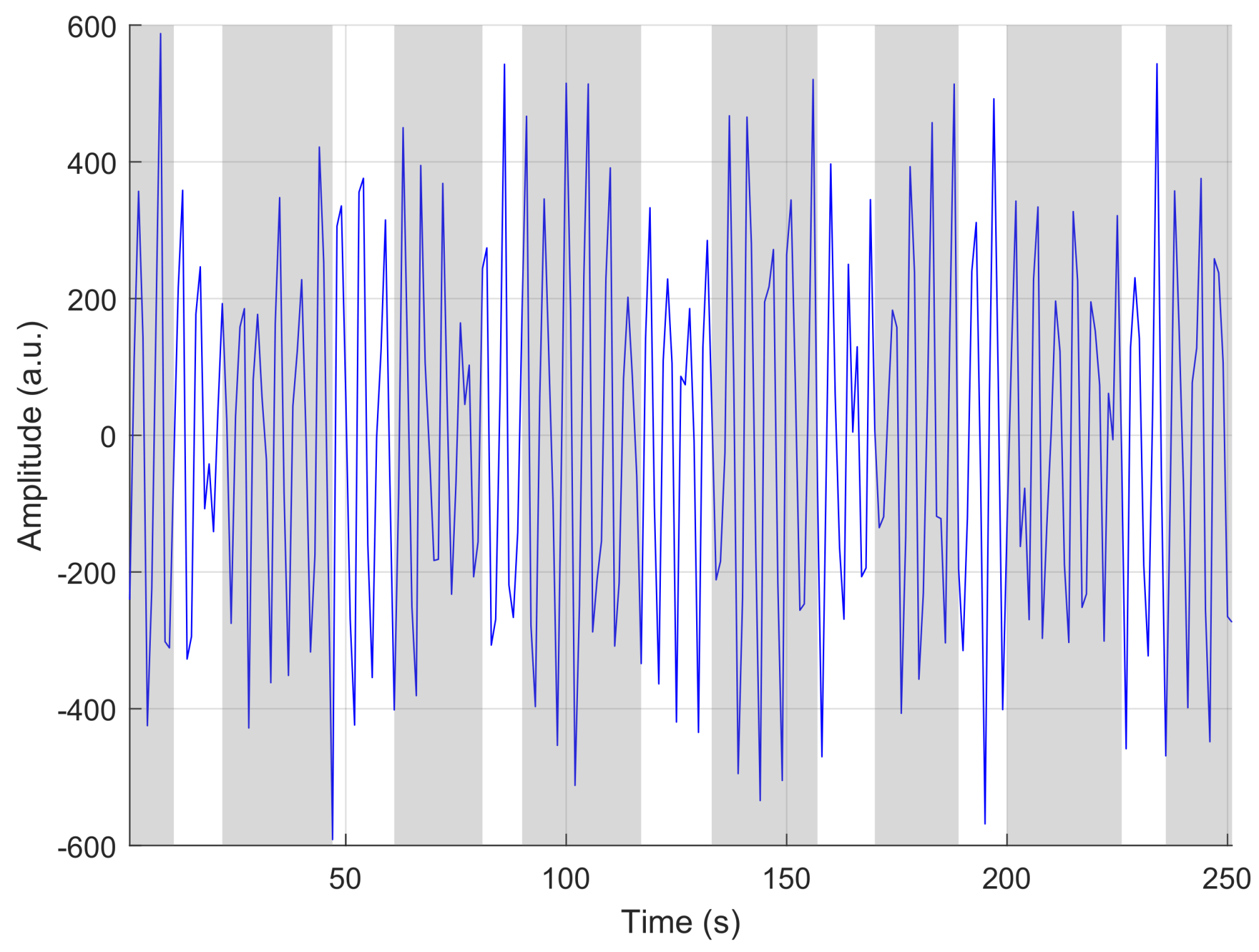

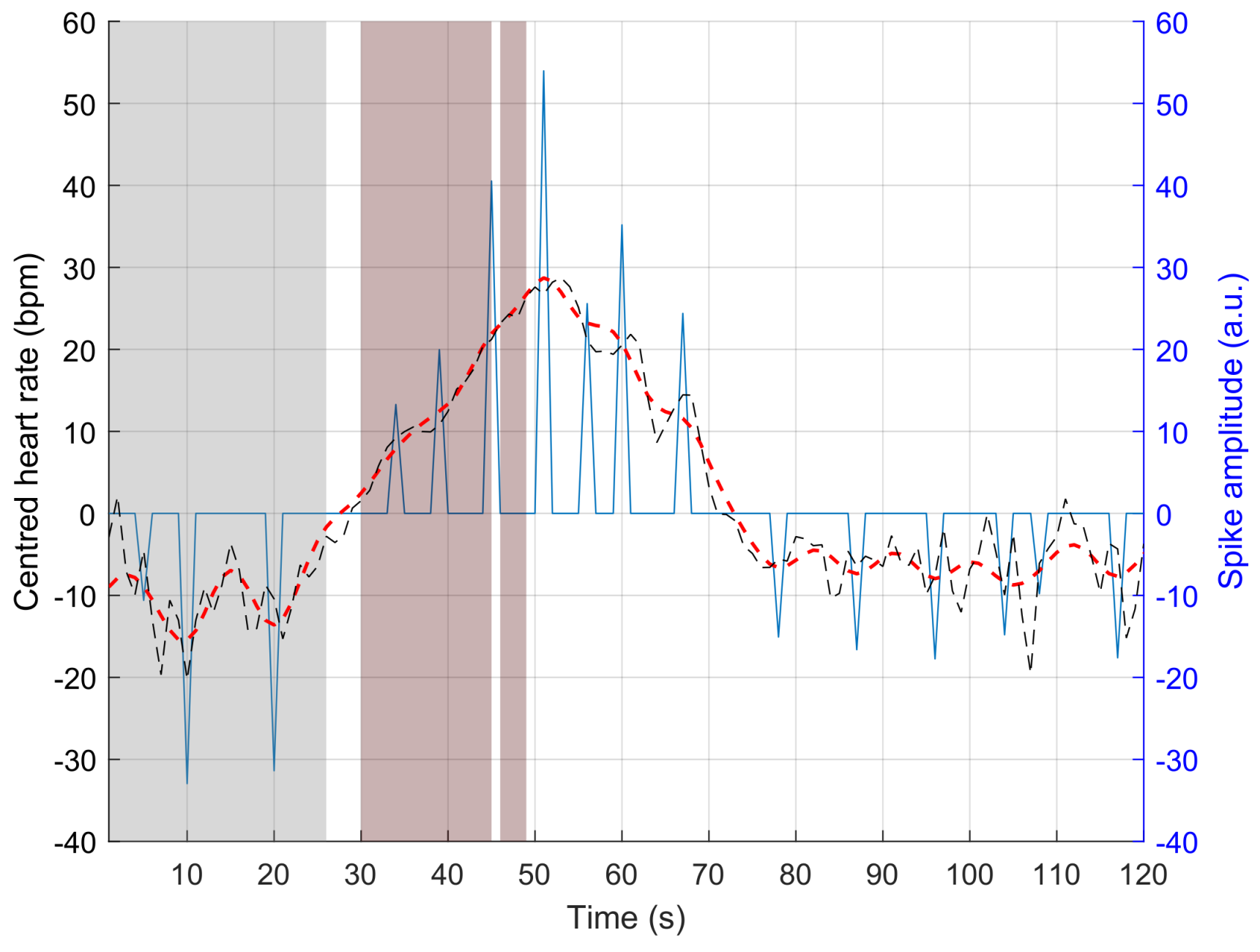

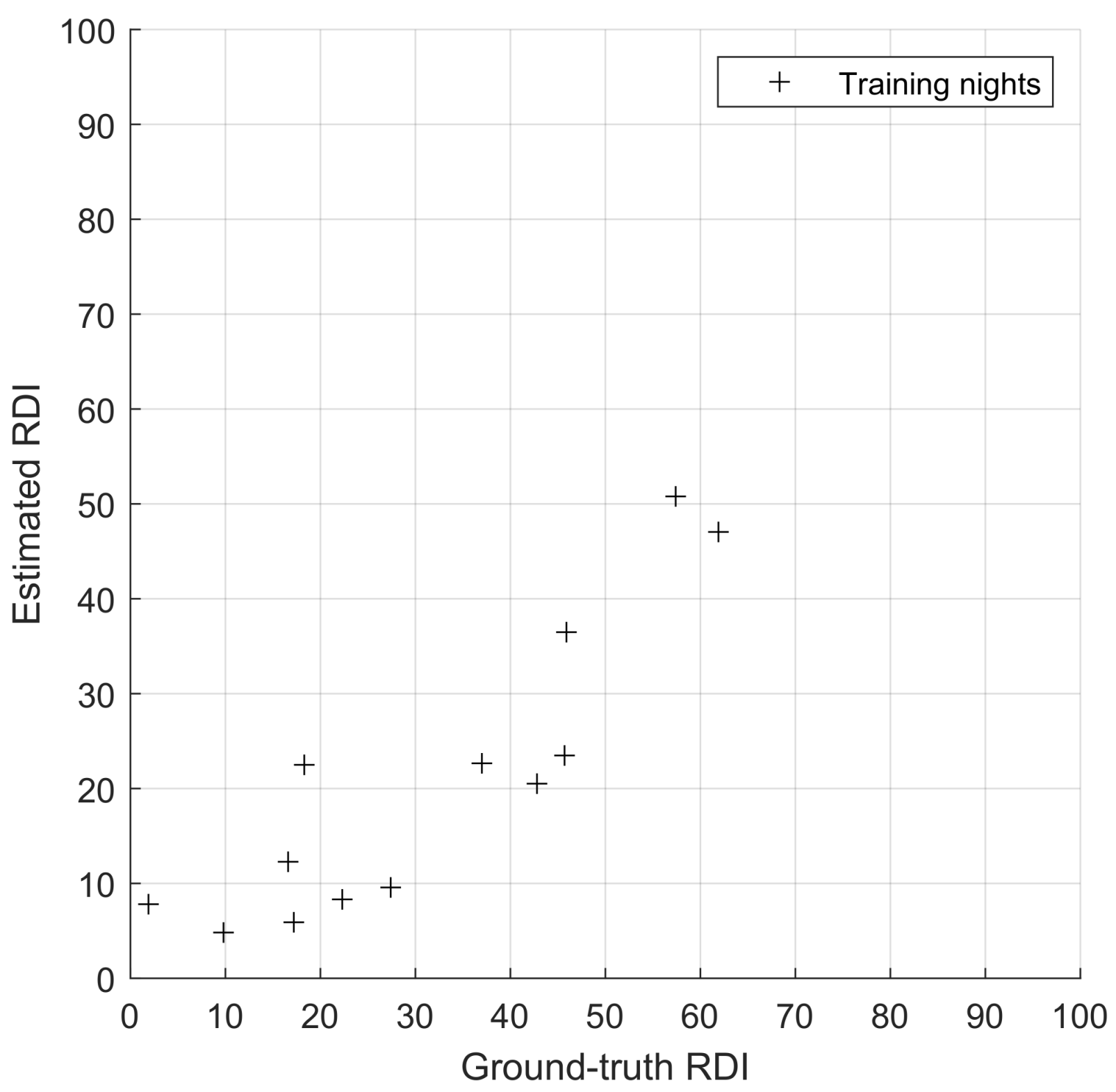




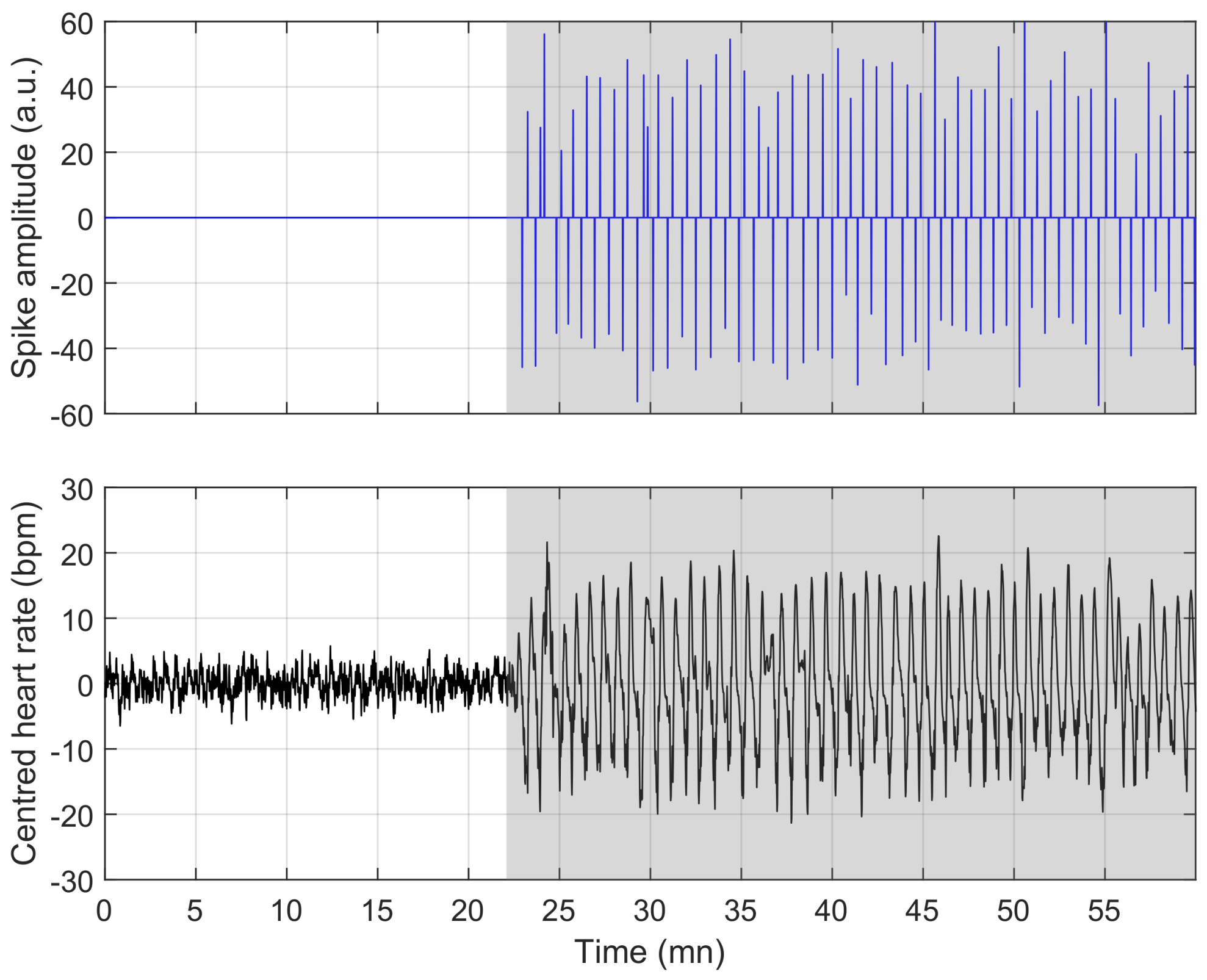
| Dataset | Non-Apneic | Mild | Moderate | Severe |
|---|---|---|---|---|
| Learning | 1 | 1 | 5 | 6 |
| (13 subjects) | ||||
| Validation | 0 | 5 | 3 | 3 |
| (11 subjects) | ||||
| Test | 0 | 3 | 3 | 4 |
| (10 subjects) |
| Dataset | Female/Male | Age | BMI |
|---|---|---|---|
| Learning | 3F/10M | ||
| (13 subjects) | (from 35 to 70) | (from to ) | |
| Validation | 4F/7M | ||
| (11 subjects) | (from 35 to 77) | (from to ) | |
| Test | 3F/7M | ||
| (10 subjects) | (from 36 to 71) | (from to ) |
Disclaimer/Publisher’s Note: The statements, opinions and data contained in all publications are solely those of the individual author(s) and contributor(s) and not of MDPI and/or the editor(s). MDPI and/or the editor(s) disclaim responsibility for any injury to people or property resulting from any ideas, methods, instructions or products referred to in the content. |
© 2023 by the authors. Licensee MDPI, Basel, Switzerland. This article is an open access article distributed under the terms and conditions of the Creative Commons Attribution (CC BY) license (https://creativecommons.org/licenses/by/4.0/).
Share and Cite
Muller, B.H.; Lengellé, R. Sparse Decomposition of Heart Rate Using a Bernoulli-Gaussian Model: Application to Sleep Apnoea Detection. Sensors 2023, 23, 3743. https://doi.org/10.3390/s23073743
Muller BH, Lengellé R. Sparse Decomposition of Heart Rate Using a Bernoulli-Gaussian Model: Application to Sleep Apnoea Detection. Sensors. 2023; 23(7):3743. https://doi.org/10.3390/s23073743
Chicago/Turabian StyleMuller, Bruno H., and Régis Lengellé. 2023. "Sparse Decomposition of Heart Rate Using a Bernoulli-Gaussian Model: Application to Sleep Apnoea Detection" Sensors 23, no. 7: 3743. https://doi.org/10.3390/s23073743
APA StyleMuller, B. H., & Lengellé, R. (2023). Sparse Decomposition of Heart Rate Using a Bernoulli-Gaussian Model: Application to Sleep Apnoea Detection. Sensors, 23(7), 3743. https://doi.org/10.3390/s23073743





